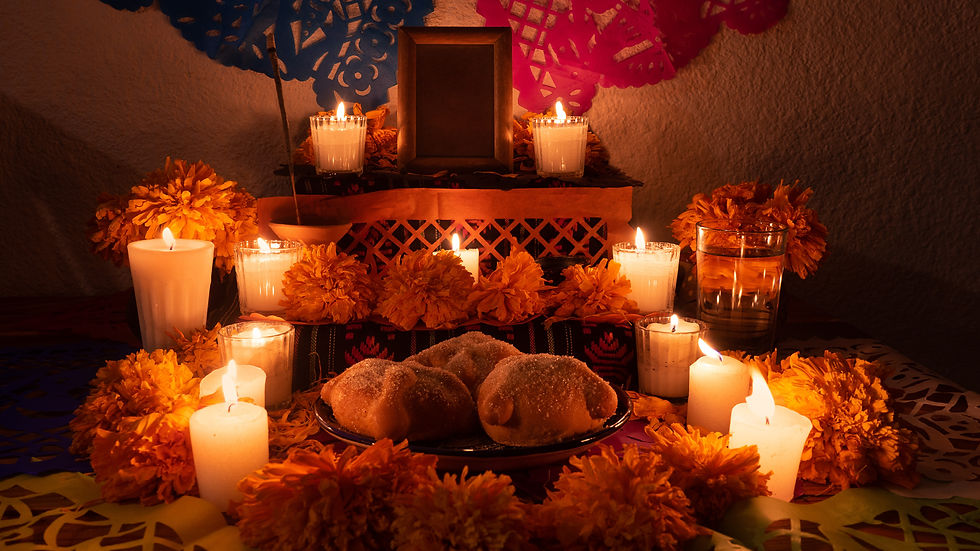Papel Picado: Honoring the Spirits Through Tradition
- fujitaya9
- Oct 24
- 2 min read

In previous posts on this blog, we have explored how the worship of ancestors and the offering of tributes in their honor are elements deeply rooted in both Japanese and Mexican traditions. In Japan, this is expressed through the Obon Festival, and in Mexico through the Day of the Dead — both celebrations that involve ceremonies and activities dedicated to welcoming the souls of departed ancestors who, according to their beliefs, return briefly to this world to visit their loved ones. These traditions share the intention of keeping the bond between the living and the dead alive.
Although each culture has its own rhythms and distinctive symbols, certain elements carry a similar spiritual meaning — one of them being paper.
In Japan, paper is often regarded as a sacred medium within Shintoism, seen in the shide (zigzag-shaped paper strips) or gohei (paired paper streamers), which designate sacred spaces and are used in purification rituals.In Mexico, the paper displayed on the altars during the Day of the Dead serves a comparable purpose — one that we will explore in detail below.

Originally, long before the arrival of the Spanish, Mesoamerican peoples were already producing a type of paper called amatl, made from tree bark. Using this material, they could cut out figures and ritual decorations, which were commonly used in ceremonies dedicated to their gods and the deceased. In some communities, these paper figures were also hung as symbols of wind and as a means of communication with the divine.
Later, during the colonial period, when the entire territory was under the rule of the Spanish crown, new materials arrived from Asia, including Chinese paper — lightweight and colorful. Mexican artisans adopted this material and transformed it with decorative designs, which were soon used in religious festivals, patron saint celebrations, and eventually on Day of the Dead altars.
The town of San Salvador Huixcolotla, located in the state of Puebla, is officially recognized as the birthplace of Mexican papel picado. Since the 19th century, its artisans began developing the technique of “serial cutting” — a method that involves stacking multiple sheets of paper and cutting them all at once using chisels, creating symmetrical and detailed figures such as skulls, flowers, crosses, suns, and festive scenes.
It was only a matter of time before this tradition spread throughout Mexico, becoming an indispensable symbol in the celebration of the Day of the Dead.

Thus, papel picado has come to represent the element of wind, one of the four natural elements (alongside water, fire, and earth) also present on the altar. Its delicate nature symbolizes the transience of life, while the cut-out patterns allow the “presence” of the souls to pass through, as if the paper becomes a veil between the world of the living and the world of the dead.
In addition, each color of the paper carries its own meaning. For example, orange and yellow symbolize the sun and life.
This year, visitors can experience a unique Day of the Dead decoration in the Fujitaya lobby, welcoming everyone with original papel picado designs that pay homage to this Mexican tradition. Likewise, our upcoming event on Saturday, November 1, 2025, in the lobby will be filled with festive fun for all guests, featuring a traditional Japanese fair inspired by Day of the Dead, creating an unforgettable day of celebration.



Comments